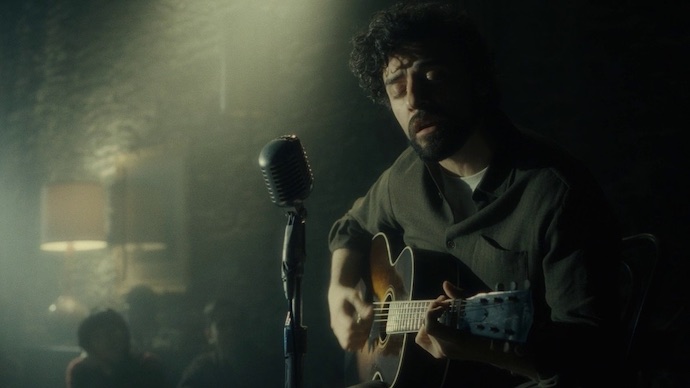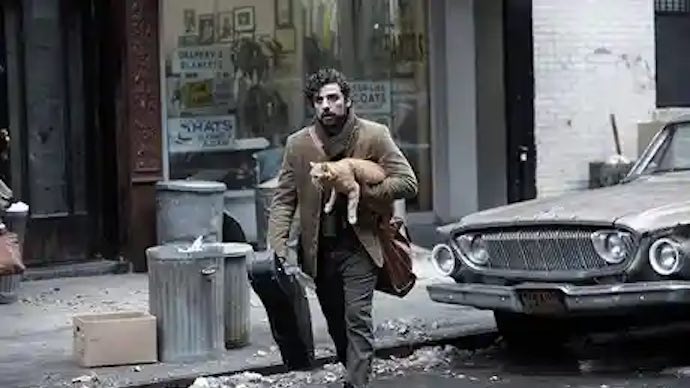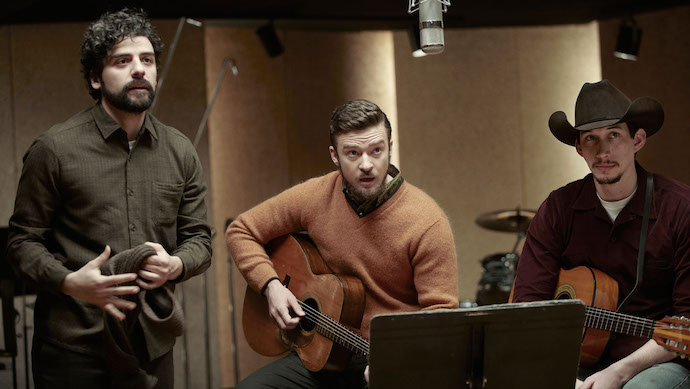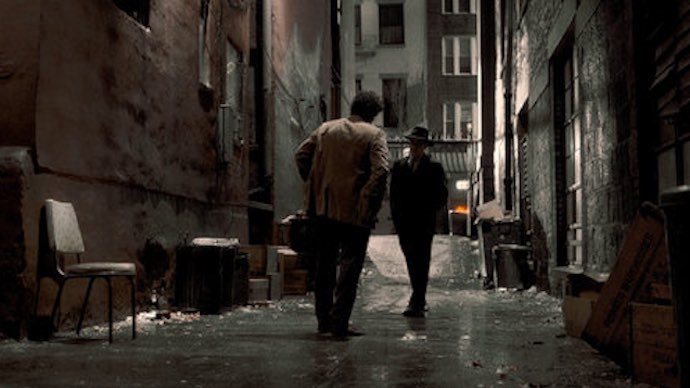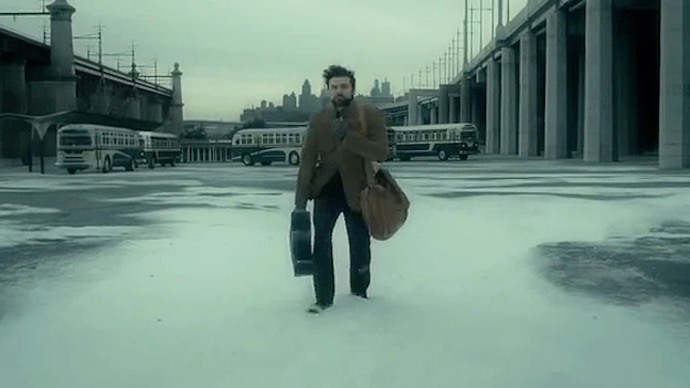As Bob Dylan plays “Farewell,” Llewyn lays on the ground after he’s been kicked good, while explaining to his attacker that the concept of a show is that people will sometimes heckle. That sequence shows the audience everything they need to know about Llewyn: he’s unapologetic, ruthlessly sarcastic, and can take a beating. We get the sense he’s taken a few beatings in his time. And that’s why Joel and Ethan Coen decided to open and close their film with it. For all of their mastery over modern cinema, for all the other near-perfect films they’ve made, Inside Llewyn Davis is often cited as their best movie ever made according to critics. Repeat viewings are needed to really appreciate its greatness. Here’s what you need to know about Inside Llewyn Davis and why it’s the best film from all the great films made by the Coen brothers.
1. How It Captures the Mood
Taking place in 1961, Inside Llewyn Davis showcases Greenwich Village and the beginnings of its arts culture from that era. What the film grasps so diligently is the tactile sense of New York at that time. Inside Llewyn Davis doesn’t make a point of showing the audience the rest of Manhattan to any noticeable degree; instead, it focuses on the microcosm of society in that specific village. By giving Llewyn a litany of places to stay throughout the story, the film truly captures what New York is like during the week we spend with Llewyn, while bringing his scene and chosen culture to the fore. The 60s era feels vibrant on screen in most other movies, but in Inside Llewyn Davis, directors Joel and Ethan Coen chose to restrict the color usage and make it feel more gray—bereft of hope for Llewyn. This technique captures the gritty side of the city’s folk scene, lending a unique mood compared to other films set in the same era. As the set design, costume design, and overall tone bring you into Llewyn’s world, the vibe you get is one of a time that’s looking for identity, and that’s exactly what the early 1960s in Greenwich Village were. Of the films that Joel and Ethan have made together, Inside Llewyn Davis knows what it is better than the rest, making the audience somehow complicit in the story rather than just an observer.
2. Oscar Isaac’s Lead Performance
The full impact of Inside Llewyn Davis rests entirely upon the shoulders of Oscar Isaac and his incredible acting. Without him front and center with his deeply compelling, starkly committed performance, the movie would have had nowhere to go. Fortunately for Joel, Ethan, and viewers, Oscar Isaac gave the role his best turn yet in his career—a performance that was shamelessly overlooked by major awards bodies except for the Golden Globes. As Llewyn Davis, Isaac conveys the weight of his world as a heavy boulder he’s unable to shake off. However, more than carrying it through the film alone, he finds a way to allow the audience to shoulder it, too, and in doing so, we feel the struggles that lie deep in his bones. Llewyn is a man grieving the loss of his friend and former singing partner Mike. He’s wrapped in a blanket of steady guilt over his suicide, yet continues to push himself to take opportunities. When measured against the Coens’ other great characters from over the decades, few have given the audience what Llewyn does. He’s imperfect, lonely, and ultimately human.
3. The Original Music & Score
The idea of a folk singer in the 60s is all well and good, but to pull it off, you need a great team behind the score and soundtrack. So, Joel and Ethan Coen went back to their old friend T-Bone Burnett. With T-Bone heading music production for the film, Marcus Mumford, Oscar Isaac, and Justin Timberlake joined in the effort to produce the soundtrack for Inside Llewyn Davis. Due to the specific nature of the songs required by the film, the folk sound of the picture had to feel as though it came straight from Llewyn himself, rather than amalgamated from other artists. The team’s endeavor was a success, and their collective effort brought the era’s style into focus while feeling wholly original.
4. The Deeply Honest Script
As Llewyn is beaten up by the aforementioned husband, he brings himself to his feet in the aftermath and watches his assailant walk to his car and leave the scene, bidding him “au revoir.” The sequence isn’t just the first and last scene of the film; it’s the first scene that Joel and Ethan thought of when conceptualizing the story. From that moment, they built the tale of Inside Llewyn Davis. This movie doesn’t adhere to a traditional narrative structure. Much like the era it depicts, Inside Llewyn Davis is free-form as it moves from one moment to the next without fear of the ending. In fact, it’s so meandering that Joel and Ethan had to add a bit of something to give the film a sense of linear structure for viewers—thus, the cat storyline in which Llewyn loses his friend’s cat. The Coens’ unusual free-form style imbues the film with a raw honesty that’s usually more associated with a filmmaker like Terrence Malick. The script explores the life of Llewyn Davis without any pressure to make it hyperbolic or exaggerated.
5. The Coens’ Delicate Direction
For most movies by the Coen brothers, there’s a sense of themselves printed within the frames, unseen by the audience but felt all the same. No Country for Old Men had the least of this imprint until Inside Llewyn Davis came along. Whereas No Country for Old Men had the look and feel of a Western with its bloody revenge story about hitmen finding their way to one another, Inside Llewyn Davis is a total departure from their norm. In fact, Inside Llewyn Davis is so far from their usual fare that it almost feels like a film made by an indie filmmaker. The stamp of Coen-ness is non-existent as Llewyn appears for the first time, and their abilities are deftly put forward without ever dominating. This kind of direction—in which the pair stepped back to allow full room for Oscar Isaac’s performance to anchor every scene—is what separates Inside Llewyn Davis from the rest of their filmography. Joel and Ethan’s direction here is delicate, smartly handled, and without a sense of their usual selves, and that infuses Inside Llewyn Davis with a poignant and subtle depth that elevates it to new heights. Read next: The best A24 films of all time

